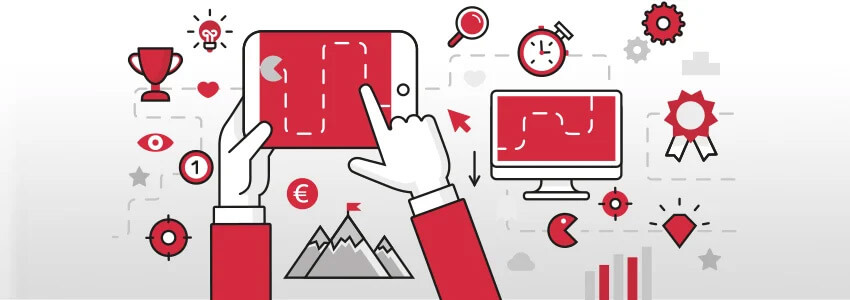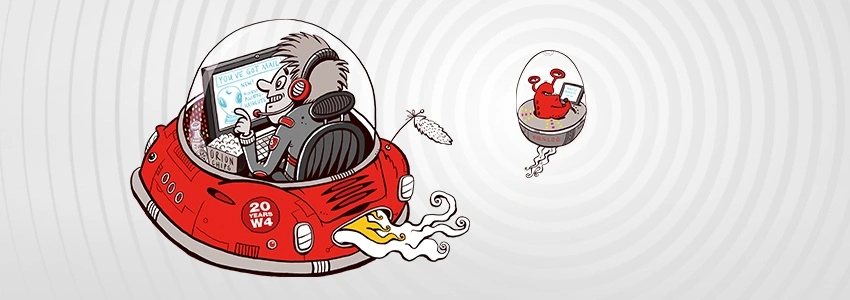As the demand for innovative customer engagement strategies intensifies, gamification has emerged as a powerful tool for building customer loyalty.
Gamification, the application of game design elements such as rewards, leaderboards, and challenges in non-game contexts, transforms ordinary interactions into engaging experiences that resonate deeply with consumers. This approach not only motivates customers to spend more by pursuing rewards but also strengthens their connection to a brand through continuous feedback and recognition.
With the gamification market projected to soar to USD 48.72 billion by 2029, growing at a CAGR of 25.85%, it's clear that gamification is more than a fleeting trend—it is a critical strategy for driving long-term customer loyalty across various sectors.
Whether aiming to boost immediate sales or foster lasting brand relationships, gamification elements are proving essential in meeting diverse business objectives.
Popular gamification elements for customer loyalty
Gamification is a powerful tool for enhancing customer loyalty by incorporating elements that tap into the fundamental human desires for achievement, recognition, and competition. Central elements such as points, badges, leaderboards, and rewards motivate customers to engage more deeply with a brand. For instance, earning points or badges for completing specific actions fosters a sense of accomplishment, while leaderboards introduce a competitive edge that encourages continued participation. Additionally, challenges or missions keep customers engaged over time by offering clear goals and the promise of rewards.
Similarly, an advent calendar can be seen as a unique form of gamification that leverages slightly different elements, such as daily surprises, exclusive offers, and interactive content. Each day’s reveal taps into the anticipation and curiosity that drive engagement, with customers returning regularly to see what new surprise awaits them. The exclusive offers and interactive content create a sense of privilege and active participation, enhancing the customer's emotional connection to the brand. Despite the different approach, these elements work on the same basic human characteristics—such as the love of surprise, the desire for exclusivity, and the enjoyment of interactive experiences—ultimately fostering loyalty and deeper engagement with the brand.
Another holiday related gamification strategy, a digital Easter game is another creative example of gamification that can significantly enhance customer engagement and loyalty. In such a game, customers are invited to participate in an Easter egg hunt, where they search for hidden digital eggs across a website, app, or social media platform. This type of game incorporates several key gamification elements to keep users engaged and motivated like hidden rewards, such as discount codes, free products, or loyalty points.
Best Practices and Strategies for Leveraging Gamification for Customer Loyalty
Ninety-three percent of modern marketers believe gamification is important in educating buyers, according to a study by DemandGen, underscoring its widespread appeal and effectiveness. However, to truly harness the power of gamification and enhance customer loyalty, it’s essential to implement it strategically. By following several best practices and strategies, businesses can ensure the effectiveness and sustainability of their gamification efforts. First, it’s crucial to align gamification with business objectives by defining clear goals and establishing key performance indicators (KPIs) to measure success. The gamification strategy should directly support aims like increasing repeat purchases, improving customer engagement, or gathering customer data.
Understanding your audience is also essential. Different customer segments respond to different types of game mechanics. For instance, younger audiences might engage more with competitive elements like leaderboards, while older demographics might prefer achievement-based rewards. Tailoring the experience and offering personalized rewards based on customer data can make the gamification experience more relevant and motivating.
Incorporating a variety of game mechanics is key to maintaining engagement. Points and rewards systems, challenges and missions, and leaderboards can all drive repeated interactions and keep the experience dynamic. However, it’s important to ensure that the rewards offered are meaningful and valuable to customers, which can range from discounts and freebies to exclusive access to products or events. A tiered reward system can further incentivize ongoing participation by allowing customers to unlock higher-level rewards as they engage more with the brand.
Keeping the experience fresh is another important strategy. Regular updates, new content, and seasonal or thematic gamification campaigns can help maintain customer interest over the long term. For example, a digital Easter egg hunt or a holiday advent calendar can create excitement and drive short-term engagement.
Fostering a community around your brand can deepen customer loyalty. Encourage social connections by incorporating features that allow users to interact, such as online events, team-based challenges, or collaborative missions. Publicly recognizing top performers or loyal customers through newsletters or social media can also boost their connection to your brand.
Providing continuous feedback is crucial for maintaining engagement. Seeing the open doors in an Advent calendar can be considered a form of progress. Each opened door serves as a visual marker of the customer's journey through the calendar, showing how far they have come and how many days they have engaged with the experience. This visual representation of progress can be motivating, as customers can see at a glance how many days they have completed and how many remain. The accumulation of open doors can create a sense of accomplishment and encourage customers to continue returning daily to complete the calendar and unlock all the rewards.
Finally, participation should be as simple and seamless as possible. Gamification elements should be intuitive, easy to use, and seamlessly integrated into the existing customer journey, whether through a website, app, or in-store experience. This ensures that customers can naturally engage with the gamified elements as they interact with your brand, leading to a more effective and enjoyable experience.
How Gamification Builds Lasting Customer Loyalty
-1.webp?width=727&height=485&name=AdobeStock_867311358%20(1)-1.webp)
Gamification plays a crucial role in building lasting customer loyalty by making the customer experience more interactive and enjoyable. This approach encourages customers to engage with the brand more frequently, ultimately fostering repeated behavior.
One of the key ways gamification achieves this is by offering rewards for repeat interactions. Discounts, exclusive offers, or special privileges incentivize customers to return to the brand regularly. For instance, a customer might be motivated to make multiple purchases within a certain period to earn a higher reward, effectively driving repeat business.
Additionally, the consistent use of gamification elements helps form habits. When customers get accustomed to checking daily challenges or engaging with features like an advent calendar, these interactions become part of their routine. Over time, this habitual engagement strengthens their connection to the brand, fostering deeper loyalty and encouraging long-term relationships.
Comparison with Traditional Loyalty Programs

When comparing gamification-based loyalty programs with traditional loyalty programs, it becomes clear that gamification offers unique advantages that can lead to deeper customer engagement and more meaningful connections with a brand.
Traditional Loyalty Programs typically operate on a straightforward model: customers earn points for purchases, which can then be redeemed for discounts, freebies, or other rewards. While effective in encouraging repeat purchases, these programs often lack the dynamic and interactive elements that truly engage customers over the long term. Traditional programs can sometimes feel transactional, with the focus primarily on the accumulation and redemption of points, which may not be enough to sustain long-term interest, especially among younger or more tech-savvy customers.
In contrast, Gamification-Based Loyalty Programs introduce a layer of interactivity and engagement that goes beyond simple point accumulation. By incorporating game design elements like challenges, missions, leaderboards, and badges, these programs create a more immersive and rewarding experience. Customers are not just passively collecting points—they are actively participating in a journey with the brand, where each interaction is an opportunity for achievement and recognition.
One of the most significant advantages of gamification is its ability to create a sense of progression and accomplishment. While traditional loyalty programs often focus solely on the end reward, gamification emphasizes the journey itself. Customers receive continuous feedback, whether through unlocking new levels, earning badges, or seeing their names on leaderboards. This ongoing sense of progress can be highly motivating and keeps customers engaged over a longer period.
Additionally, gamification appeals to a broader range of customer motivations. While traditional programs might primarily attract customers who are motivated by tangible rewards, gamification taps into other intrinsic motivators, such as the desire for competition, achievement, and social recognition. This makes gamified programs more versatile and potentially more appealing to a wider audience.
By turning customer interactions into a game-like journey filled with rewards, recognition, and social interaction, gamification can drive higher levels of engagement, satisfaction, and ultimately, customer loyalty. If you're ready to explore how gamification can transform your customer loyalty strategy and generate more leads - our gamification marketing agency is here to help.











